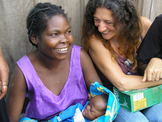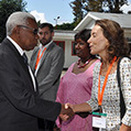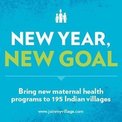Reproductive Health and RightsSexual Health for the Millennium. A Declaration and Technical Document.
World Association for Sexual Health. (2008). Minneapolis, MN
Every Woman, Every Child: from commitments to action
The First Report of the independent Expert Review Group (iERG) on Information and Accountability for Women’s and Children’s Health. World Health Organization 2012
Women's Right to Health
N. B. Sarojini, Suchita Chakraborty, Deepa Venkatachalam, Saswati Bhattacharya, Anuj Kapilashrami, Ranjan De. 2006, National Human Rights Commission. [Example from India]
Maternal Near Miss
Slideshow: Global distribution of maternal mortality 2010 JP Souza, WHO Department of Reproductive Health and Research Training Course in Sexual and Reproductive Health Research Geneva 2010
The World Bank’s Reproductive Health Action Plan 2010-2015
Draft for Discussion Sadia Chowdhury The World Bank December 3, 2009
Women on the Front Lines of Health Care: State of the World’s Mothers 2010
Save the Children. May 2010
Family Planning Can Reduce High Infant Mortality Levels
The Alan Guttmacher Institute. Issues in Brief. 2002 series, No. 2
From Cells to Selves: Reproductive Health in the 21st Century
The National Institute of Child Health and Human Development (NICHD)
Statistics and Stories: Improving the Quality of Maternal and Neonatal Health in Europe
Entre Nous. The European Magazine for Sexual and reproductive Health. No. 70. (2010)
Over-medicalisation of Maternal Care in Developing Countries
We reviewed available data on the frequency of obstetrical interventions (caesarean sections, episiotomies, and oxytocics) in developing countries. Rates of caesarean sections are increasing and are higher than 15% in a majority of Latin American countries and in some regions of Asia. There is no indication of rising rates of caesarean sections in Africa, but rates are already higher than 5% in many urban areas of East and Southern Africa. The situation is different in West Africa, where only Ghana has a rate higher than 5% in urban areas. A Manifesto for maternal health in a new era
From maternalhealthtaskforce.org - February 24, 2013 Maternal Health Task Force brings together existing maternal health networks and engages new organizations to facilitate global coordination of maternal health programs. 
Scaling up Family Planning and Maternal and Child Health Programs: Focusing on Gender Integration, Policy Implementation, and Measurement — MEASURE Evaluation
From www.cpc.unc.edu - February 26, 2013 An all day workshop on Scaling up Family Planning and Maternal and Child Health Programs: Focusing on Gender Integration, Policy Implementation, and Measurement will be held in Kuala Lumpur, Malaysia, on May 27, 2013. |
| ||||||||||||||||||||||||||||||||||||||||||||||||||||||||||||||||||||||||||||||||||||||||||||
Articles and Blog Posts

UNFPA - State of World Population 2013
From www.unfpa.org - October 28, 2014 Motherhood in Childhood: Facing the challenge of adolescent pregnancy Every day in developing countries, 20,000 girls below age 18 give birth. Nine in 10 of these births occur within marriage or a union. This has consequences on the health, education, employment and rights of an untold millions of girls. What are the challenges of adolescent pregnancy, and what can we do to ensure girls have a healthy and safe transition into adulthood? 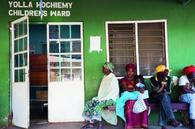
Dramatic drop in maternal mortality in Gambia
From medicalxpress.com - October 11, 2014 Long-term research collaboration has helped reduce maternal mortality in the Gambia to less than half its previous level over 14 years. However, the country is still facing numerous challenges in terms of health. 
Maternal mortality: Commissioner tasks pregnant women on regular ante-natal
From nigerianpilot.com - June 19, 2014 Bayelsa Commissioner for Health, Dr Ayibatonye Owei on Monday advised pregnant women in the state to cuddle anti-natal care to support government plans to checkmate maternal mortality. State of World Population 2012 By Choice, Not By Chance: Family Planning, Human Rights and Development
16 November 2012 Source: UNFPA All human beings—regardless of age, sex, race or income—are equal in dignity and rights. Yet 222 million women in developing countries are unable to exercise the human right to voluntary family planning. 


WAHA - Women and Health Alliance International
From www.waha-international.org Motorcycle ambulance for maternal health / Moto-ambulance pour la santé maternelle - See more at: http://www.waha-international.org/?videos=42#sthash.DNzLz7Cl.dpuf 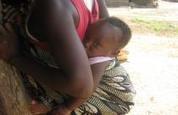
Maternal Health – Lessons Learned - KIT Portals - Royal Tropical Institute
From portals.kit.nl The information portal shares examples of practical projects and initiatives that have been undertaken with the explicit objective of contributing to Millennium Development Goal 5: Improving maternal health, particularly in developing countries. 
Women Deliver: Safe Motherhood, Gender Equality, Girls' Education, Poverty Reduction, Combating HIV/AIDS, Maternal and Newborn Health
From www.womendeliver.org Mobilising access to maternal health services in Zambia | Healthy Newborn Network
From www.healthynewbornnetwork.org Women Deliver »The X Factor: Why Investing In Family Planning Can Yield The Greatest Impact
From www.womendeliver.org - July 12th, 2013 By: Pamela W. Barnes, EngenderHealth; Originally posted on Forbes.com There are certain moments in our lives when the dots connect, the numbers add up, and things just make sense. 
NOVA | Improving Maternal Health
From www.pbs.org - February 21, 2013 In the year 2000, the U.N. set out to make maternal health care a universal right. Where does that goal stand today? |
|


